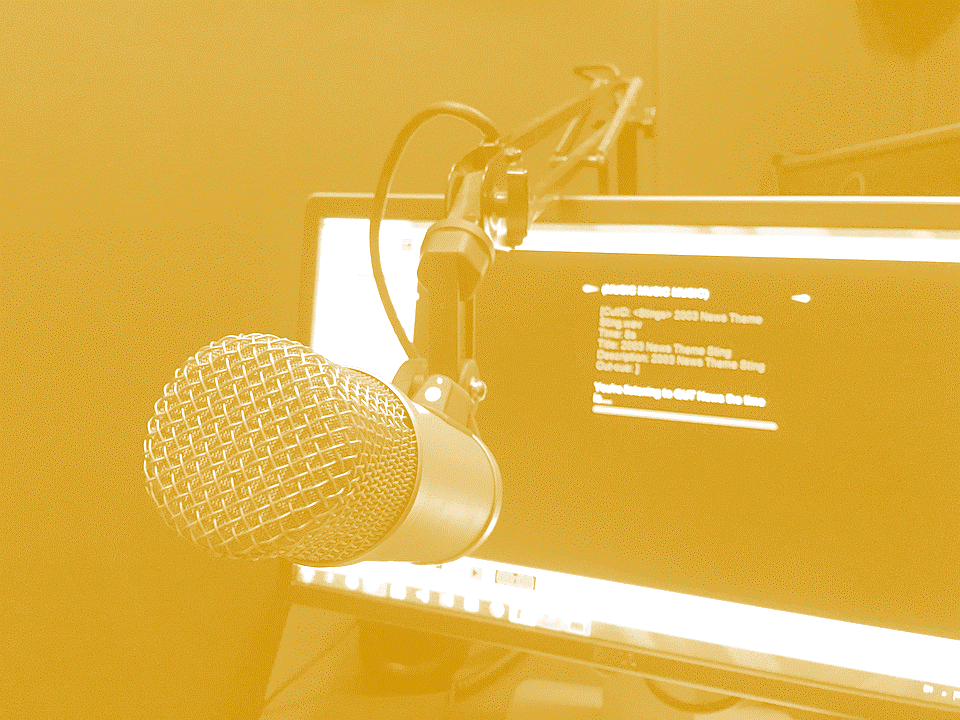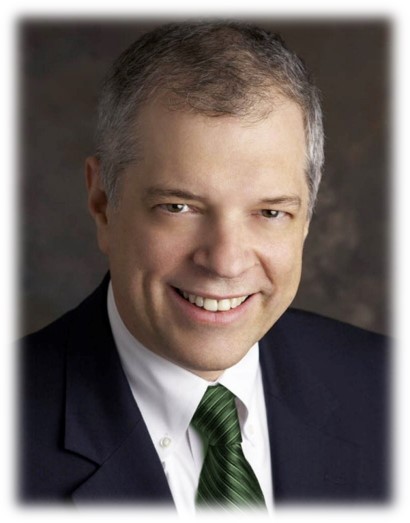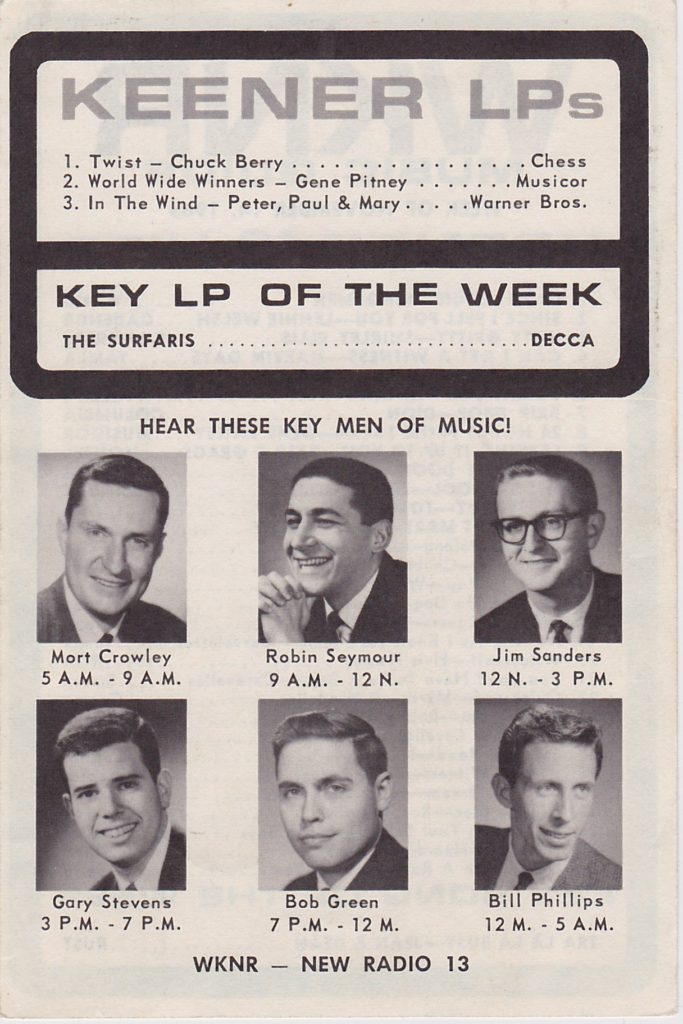
We all have our buddies from college, and radio friends often hold an even higher place in our minds and hearts. If you love the radio business, memories of the people you first met when those fires were being ignited are even more vivid. My radio teeth were cut at Michigan State University back in the ’70s.
The TV-Radio Department as it was known back then was a hotbed of excitement and enthusiasm. It was a fun major, and a space where like-minded radio wannabes could hang out and learn the craft. There was a similar vibe going on at the Michigan State Network – a carrier-current web of dormitory affiliates with a central hub was the place where hundreds of fledging stars figured out radio together while entertaining thousands of MSU students.
Some of the best and brightest came out of that exciting ecosphere, and one of the most talented and smart was Scott Westerman. The  moment you met him, you knew he “got it.” Like many of us, he got his start in radio, but then made the leap to the cable TV business. Scott pioneered interactive content and Internet access for that industry. He launched an international radio network, and still grabs his headphones as a contributor to “MSU Today” on WJR/Detroit, as well as co-hosting “The Mark Hollis Show” (MSU’s Athletic Director).
moment you met him, you knew he “got it.” Like many of us, he got his start in radio, but then made the leap to the cable TV business. Scott pioneered interactive content and Internet access for that industry. He launched an international radio network, and still grabs his headphones as a contributor to “MSU Today” on WJR/Detroit, as well as co-hosting “The Mark Hollis Show” (MSU’s Athletic Director).
Scott also curates Keener13.com and the Keener Facebook page – the radio station he grew up with that he lovingly honors today.
By day, he serves as Associate Vice President for Alumni Relations at Michigan State. There’s no harder working, stronger supporter of the Green and White, radio, and people. Scott is one of those rare people who connects people and ideas – because that’s his passion.
In today’s “Guest List,” we get the benefit of Scott Westerman’s brains and knowledge as he writes a great primer for today’s on-air talent. Take good notes. There’s a lot here about how the next transformation of the radio industry may be less about tech and more about the person behind the mic. – FJ
The Greater Good Science Center at UC Berkley recently published a blog post that talks about 5 ways music can make you a better person. Author Summer Allen pointed to research showing that:
- Listening to uplifting music may make you happier—and possibly more generous
- Songs with “prosocial” lyrics may make you more helpful and empathic
- Listening to prosocial songs may change how you spend your money
- Song lyrics may change your attitude towards people different from you
- Making and moving to music may boost cooperation and connection
When I was working my way up the radio ziggurat back in the 1970s, one of our unique selling points was how the announcers contributed to our brand’s value proposition. It was a major part of the sales team’s presentation. Looking back over my faded notes from those days, there are some interesting parallels to Summer’s points.
1. An uplifting personality can positively impact the listener’s day

We can provide the audience with context about the music we play and arm them with the information they need to effectively navigate the day ahead.
Despite the painful fact social media feeds and Wikipedia are the places where many now turn for this info, effective curation of content is still our core competency. Make it easy to find and rewarding to listen to.
2. What we say and how we say it can inspire our listeners to act
While Talk Radio and the “shock jock” approach have their adherents, over time, accentuating the positive while providing thoughtful perspective on the negative creates a reassuring presence that listeners can depend on.
3. Our conscious actions are driven by what we program into our subconscious minds
Song lyrics are part of that programing, but so are the words that announcers use in between. As you work to create long term, deeper connections with listeners, watch your language.
4. Loyalty is built beyond the studio
And most importantly, the radio brand may begin with linear programming, but it ultimately thrives or dies based on what we do to augment the value. In the old days, that meant emceeing gigs and record hops. Today, it requires ways your audience can listen to your content on a smart device, a carefully crafted social media footprint for both the master brand and for individual announcers that drives people to your programming, and a face-to-face strategy that gives your talent the opportunity to directly interact with the listener.
the value. In the old days, that meant emceeing gigs and record hops. Today, it requires ways your audience can listen to your content on a smart device, a carefully crafted social media footprint for both the master brand and for individual announcers that drives people to your programming, and a face-to-face strategy that gives your talent the opportunity to directly interact with the listener.
Steve Schram’s award winning Michigan Radio does this superlatively in the public broadcasting domain, with a daily headline email, well crafted social media messaging, integration into the NPR One application, events where listeners can participate in content creation, and on a well designed, highly usable website.
5. Imagine the future and create it now
Sadly, this notion never made it into any of the memos I received during my broadcasting career. The closest concept was the “intelligent flexibility” with which Bob Green and my other heroes at Keener 13 in Detroit were allowed to be agile and experiment. Many stars that moved on to other markets were polished at Keener. We still talk about how a 5,000 watt AM station with an inferior nighttime pattern could dominate Detroit in its prime.
Curate your content for the podcast domain. Take a look at Stitcher’s Top 100 Podcasts, analogous to Billboard’s Hot 100 hits. Could your station resurrect a news and public affairs unit to tell compelling stories? Could you re-purpose your morning show, sans the music for afternoon drive podcast consumption?
How might you turn some of your bits into 30-second videos for Twitter, Facebook and Instagram? Have you considered using Facebook Live to simulcast your morning show? The sales package that used to tout “AM & FM” should now include social media, bugs on your YouTube videos, and mentions on your podcasts.
During the golden age of music radio – that period when announcers played a crucial role in a unified presentation – broadcasting was intertwined with an audience profoundly impacted by what they heard and motivated to take action as a result. Whether it was buying a stereo system, attending a rally, or rooting for their favorite team, points of view both in front of and behind the loudspeaker were molded by the interaction.
Radio at its best is still a relationship medium. Once upon a time, we had to adapt from the long-form programming that migrated to television in the 1950s. Trail blazers like Storz, McLendon, Drake and Chenault reinvented the medium to appeal to a more mobile audience with ears glued in their cars and to transistor radios.
Classic Rock followed the emergence of FM and the introduction of those stereo systems we saved up a month’s pay to purchase. The next generation of innovators will figure out how to express a compelling brand message across the devices that are glued to today’s ears. As has always been the case, the fundamental rules of mutually beneficial relationships will still apply.
Radio has changed a great deal since those halcyon Keener 13 days. But one thing that’s a constant is that on-air talent have the power to build better radio brands.
Think about that the next time you slap on those headphones and crack that mic.
- What To Do If Your Radio Station Goes Through A Midlife Crisis - April 25, 2025
- A 2020 Lesson?It Could All Be Gone In A Flash - April 24, 2025
- How AI Can Give Radio Personalities More…PERSONALITY - April 23, 2025





Growing up in Detroit, listening to WDRQ I’ve always had programmers throughout the year who would ask me “Where did you grow up?” As soon as I said Detroit I could see a light bulb moment in their eyes for some reason…then inevitably they would say “It makes sense now…you sound the way you do because you grew up listening to great radio” This was a great read and points out all the things about radio that drew me to it like a magnet. Something has to give but my concern is with all the social media usage and abuse among younger people, the texting instead of verbally communicating, the emailing instead of calling and having actual audio conversations…my concern is their verbal skills and radio’s survival itself. It’s an exciting time for the business…
Kim, I would respond that because of the pervasiveness of social media & texting, the power of spoken word communication has intensified. Radio DJs have the ability to connect in even more meaningful ways with their audience, verbally and face to face. And BTW, did you “Q in your car?”
Yes I agree….haha I did “Q In My Car and I also answered the phone WDRQ’s A Ball!
I had a feeling. 🙂
You’ve really sparked my memories of working at Shaw Radio!
Bringing in your records, right, Bob? Thanks for the note.